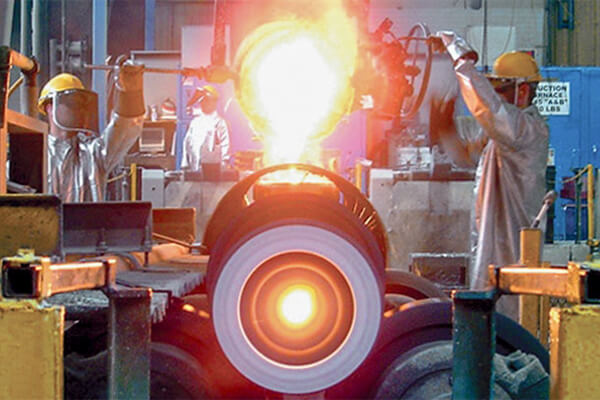
Steel rolling is a fundamental process in metalworking, where raw metal is pressed through rollers to reduce thickness and improve mechanical properties. The importance of the rolling process in steel manufacturing lies in the ability to process raw materials such as ingots and billets to produce a variety of final products such as bars and plates. This blog aims to delve into the intricate details of steel rolling, including historical background, classification, detailed process, applications, benefits, and challenges within the industry.
Understanding the Rolling Process
The rolling process in steel is a pivotal method that involves passing metal stock through rolls to decrease thickness and enhance mechanical properties. This technique utilizes compressive forces to shape raw materials like ingots and billets into final products such as bars and sheets.
The definition of the rolling process entails the reduction of metal thickness by passing it between rolls, ensuring uniformity and desired properties. It is a plastically deformation process crucial for manufacturing various steel products.
Steel rolling can occur in two primary forms: hot rolling and cold rolling. Hot rolling involves processing the metal at elevated temperatures, allowing for higher reductions compared to cold rolling performed at room temperature. On the other hand, cold rolling offers precise control over dimensions and surface finish.
Exploring the historical context of steel rolling unveils a rich evolution of techniques that have shaped modern industry practices. The development of rolling mills has been instrumental in advancing steel production efficiency.
The evolution of rolling techniques has significantly contributed to the efficiency and precision of metal shaping processes. Innovations in roll configurations have enabled manufacturers to produce a wide range of steel products with improved quality.
Throughout history, several key milestones have marked advancements in steel rolling, leading to enhanced product quality and production capabilities. These milestones reflect the continuous innovation within the industry to meet evolving market demands.
The hot rolling process involves shaping steel at elevated temperatures, allowing for greater reductions in thickness compared to cold rolling. This method is widely utilized in the industry due to its efficiency and versatility.
In contrast, cold rolling involves processing steel at room temperature, offering precise control over dimensions and surface finish. This method is favored for applications requiring tight tolerances and a superior surface quality.
Rolling Mills play a crucial role in the rolling process by exerting compressive forces on the steel to reduce its thickness and shape it into desired forms. These mills consist of multiple roll stands that work in tandem to ensure a uniform and precise outcome. The rollers within the mills are meticulously designed to withstand high pressures and temperatures during the rolling operation.
Various types of rollers are employed in the rolling process, each serving a specific function to facilitate the deformation of steel. From work rolls that directly contact the material to backup rolls supporting the work rolls, every roller type contributes to maintaining stability and consistency throughout the rolling stages. Additionally, intermediate rolls aid in controlling strip profile and thickness distribution, ensuring quality output.
The rolling process involves a series of meticulous steps that transform raw steel into refined products ready for various industrial applications. Understanding these steps is essential for ensuring efficiency and quality control throughout the manufacturing process.
Before entering the rolling mill, the steel undergoes thorough preparation to optimize its formability and properties. This preparation includes heating the material to specific temperatures, descaling to remove impurities, and conditioning for optimal malleability. Properly prepared steel ensures smooth processing during rolling, leading to superior end products.
During rolling, the prepared steel passes through multiple stages where it undergoes gradual deformation to achieve the desired dimensions and properties. Each stage is meticulously controlled to ensure precise reductions in thickness while maintaining uniformity across the entire length of the material. The rolling stages are critical for shaping steel into various profiles such as sheets, bars, or coils according to industry requirements.
Upon completing the rolling stages, the rolled steel enters a phase dedicated to finishing touches and rigorous quality control measures. Surface treatments like pickling or coating may be applied to enhance corrosion resistance or improve aesthetics. Quality control inspections are conducted at regular intervals to verify dimensional accuracy, mechanical properties, and surface finish before packaging and distribution.
Please send us your request and we reply to you with in 24 hours.
Submit Request